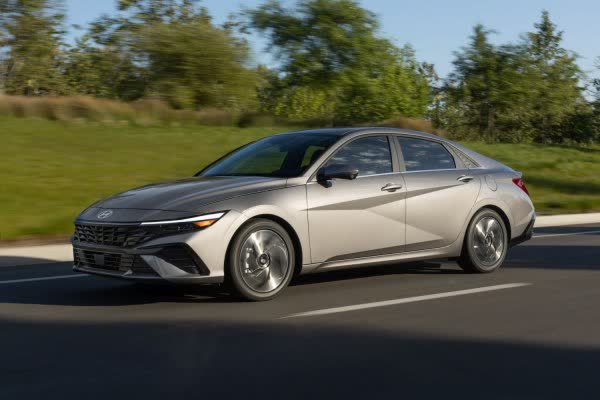Everything you need to know about specifications and performance - Hyundai Elantra 2023 - N 2.0 T-GDI (286 Hp)

Overview:
What is the engine capacity of a Hyundai Elantra 2023?
The engine capacity of the Hyundai Elantra 2023 is 1998.
Hyundai Elantra 2023 How many horsepower?
The engine power of the Hyundai Elantra 2023 is 286 Hp @ 5500-6000 rpm..
What is the Hyundai Elantra 2023 engine?
Hyundai Elantra 2023 engine is Theta II / G4KH. (Click to see other cars using the same engine)
How much gasoline does a Hyundai Elantra 2023 consume?
The Hyundai Elantra 2023 consumes 9.7 liters of gasoline per 100 km
General:
Brand: Hyundai
Model: Elantra
Generation: VII (CN7, facelift 2023)
Modification (Engine): N 2.0 T-GDI (286 Hp)
Start of production: August, 2023
End of production:
Powertrain Architecture: Internal Combustion Engine
Body type:Sedan
Seats: 5
Doors: 4
Engine:
Power: 286 hp @ 5500-6000 rpm.
Power per litre: 143.1 hp/l
Torque: 392 nm @ 2100-4700 rpm.
Engine Model/Code:Theta II / G4KH
Engine displacement: 1998
Number of cylinders: 4
Engine configuration: Inline
Number of valves per cylinder: 4
Fuel injection system: Direct injection
Engine aspiration: Turbocharger, Intercooler
Valvetrain: DOHC, MLA, E-CVVT
Engine oil capacity: 5.2 l
Engine layout: Front, Transverse
Cylinder Bore: 86 mm
Piston Stroke: 86 mm
Compression ratio: 9.5:1
Performance:
Fuel Type: Petrol (Gasoline)
Fuel consumption (economy) - urban: 11 l/100 km
Fuel consumption (economy) - extra urban: 8.1 l/100 km
Fuel consumption (economy) - urban (EPA): 11 l/100 km
Fuel consumption (economy) - extra urban (EPA): 8.1 l/100 km
Fuel consumption (economy) - combined (EPA): 9.7 l/100 km
Fuel consumption (economy) - combined: 9.7 l/100 km
Emission standard: ULEV125
Weight-to-power ratio: 5.1 kg/Hp, 197.9 Hp/tonne
Weight-to-torque ratio: 3.7 kg/Nm, 271.3 Nm/tonne
Space:
Kerb Weight (kg): 1445-1480
Max. weight (kg): 1860-1890
Max load (kg): 410-415
Trunk (boot) space - minimum: 402 l
Fuel tank capacity: 47 l
dimensions:
Length: 4710 mm
Width: 1825 mm
Height: 1415 mm
wheelbase: 2720 mm
Front track: 1584 mm
Rear (Back) track: 1579 mm
Ride height (ground clearance): 135 mm
Minimum turning circle (turning diameter): 11.7 m
Powertrain, Suspension and Brakes:
Drivetrain Architecture: The Internal combustion Engine (ICE) drives the front wheels of the vehicle.
Drive wheel: Front wheel drive
Number of gears and type of gearbox: 6 gears, manual transmission
Front brakes: Ventilated discs, 360x30 mm
Rear brakes: Ventilated discs, 314x20 mm
Assisting systems: ABS (Anti-lock braking system)
Steering type: Steering rack and pinion
Power steering: Electric Steering
Tires size: 245/35 R19
Wheel rims size: 8J x 19
Front suspension: Independent, type McPherson with coil Spring and anti-roll bar
Rear suspension: Independent multi-link Spring suspension with stabilizer
See also

Other generation.
Its production began in 2020 until 2023

Same engine. (Theta II / G4KH).
Its production began in 2021 until 2023

Same engine. (Theta II / G4KH).
Its production began in 2017 until 2018

Write a comment